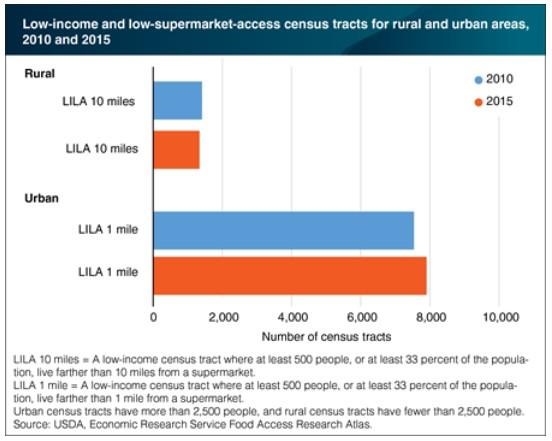Efforts to encourage Americans to improve their diets presume that a wide variety of nutritious foods are available to all. But, for some areas and people, access to healthy food may be limited by the lack of supermarkets and financial resources. ERS’s Food Access Research Atlas allows users to map low-income and low-supermarket-access (LILA) census tracts in 2010 and 2015.
One access measure considers a low-income tract to be LILA if at least 500 people, or at least 33 percent of the population, live more than 1 mile from the nearest supermarket in urban tracts or more than 10 miles in rural tracts. Between 2010 and 2015, the number of urban LILA tracts increased by 5 percent, while the number of rural LILA tracts decreased by 5 percent.
Much of the increase in urban LILA tracts is attributed to a rise in the number of low-income areas—perhaps a casualty of the 2007-09 recession—rather than reduced access. This chart is from "Low-Income Areas With Low Supermarket Access Increased in Urban Areas, But Not in Rural Areas, Between 2010 and 2015" in ERS’s Amber Waves magazine, April 2017.

Source:usda.gov